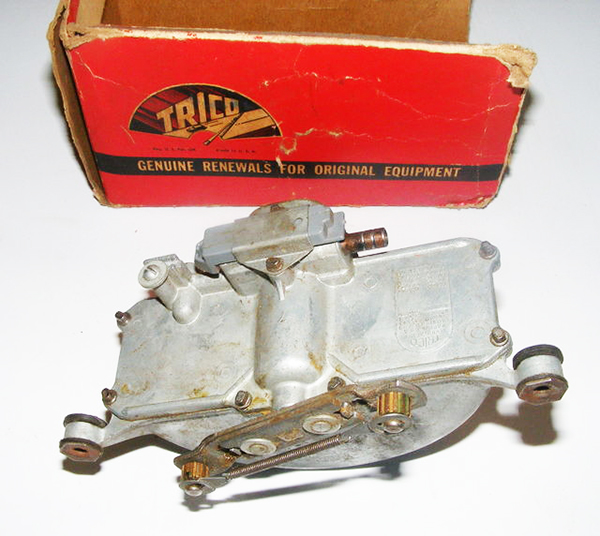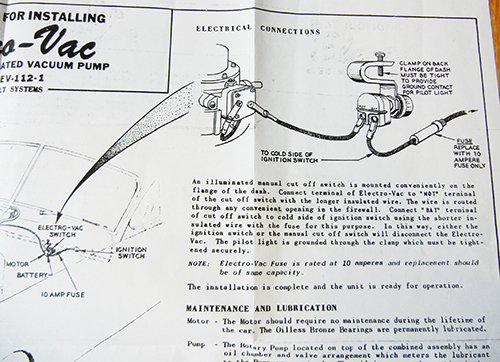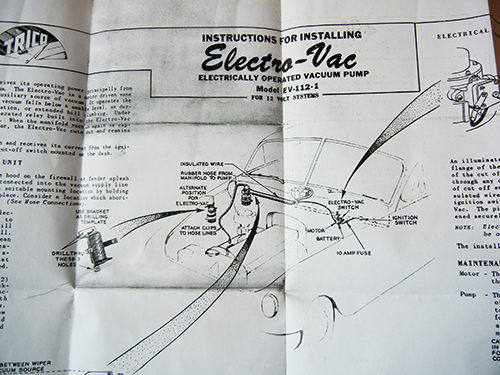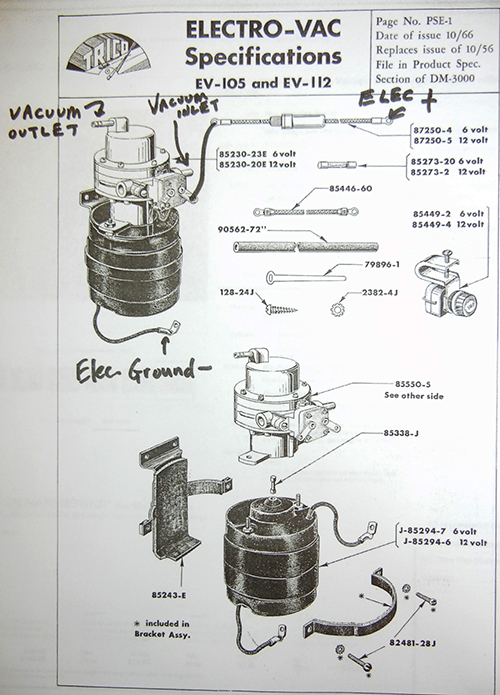Period-correct fix for classic Mercury wipers
By Roy Lange
If you own an early Mercury or Ford, as I do (1953 Mercury), you have the vacuum wiper motor built by Trico that was installed by the factory in your car.
For those of you that live in the flatter portion of the U.S., the wiper worked well enough until you got caught in a rainstorm and wanted to pass the car in front of you.
Then you pushed on the accelerator and your wipers stopped in place on the windshield. Not exactly what we have come to expect from our wipers today.
My issue is that I live at an 8,300- foot altitude and since most of the car shows and cruises are in the Denver area, when I come home I am climbing 3,000 feet in a 13-mile stretch of the highway. So the accelerator pedal spends most of the time closer to the floor.
If it was raining, I relied on Rain-X to do the job of removing the rain from the windshield. A little-known fact is that Ford offered electric wipers in their trucks as early as 1948.
A little over a year ago, I was at the Tri-State Swap meet in Denver, with the goal of seeing if I could find said electric wiper motor and brackets with the thought of installing them in my Merc.
As I went through the swap meet, I asked if anyone had the early electric wiper motors and one vender said he did. He returned with what turned out to be the Electro-Vac vacuum pump. I really had no idea what it was from, but I asked the price and when he said $10, I thought I couldn’t lose. I bought it and took it home to see if I could get it to work.
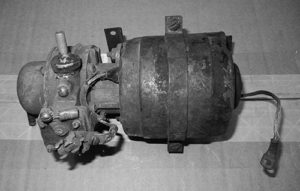
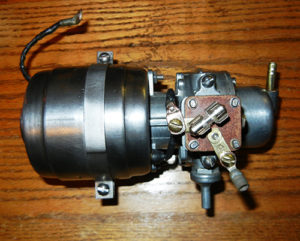 I recommend that you remove the motor from the unit to free up the pump when cleaning it, then reassemble it before testing it with the motor.
I recommend that you remove the motor from the unit to free up the pump when cleaning it, then reassemble it before testing it with the motor.
After taking it apart, I sprayed WD-40 into the pump to help free it up, then used a drill on the pump shaft to turn it over until it turned freely. I then reassembled the motor and the pump, and now had a working Electro-Vac vacuum pump that I tested with a vacuum gauge.
All well and good, but now where did it all go? I contacted Trico and they were kind enough to send me diagrams showing how and where to mount and service the unit. These diagrams would have been provided in the box with a new unit when they were originally being built and sold. They also sent me original ads for the unit.
Trico apparently figured out, probably from customers’ not-too- happy feedback, that their wipers had a few shortcomings. Subsequently, they created the “fix” and made it available to the general driving public, since their wipers seemed to be the standard in most vehicles of that era.
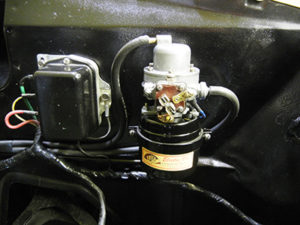 The diagrams showed the unit being mounted on the passenger side of the engine compartment. Mine was a bit full already, so I decided to mount it over on the driver’s side next to the voltage regulator, as there was ample space.
The diagrams showed the unit being mounted on the passenger side of the engine compartment. Mine was a bit full already, so I decided to mount it over on the driver’s side next to the voltage regulator, as there was ample space.
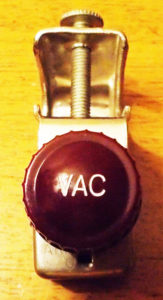
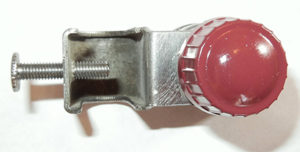 The unit I bought did not come with the switch, so I searched until I found an original switch that came with the unit. Since none were available on the Internet, I did have a switch that was almost identical.
The unit I bought did not come with the switch, so I searched until I found an original switch that came with the unit. Since none were available on the Internet, I did have a switch that was almost identical.
I proceeded to first paint the switch the correct color and used transfer letters to finish it. It does have a light bulb behind the switch that lights up when the switch is turned on, so the paint was a light coat to allow the light to come through.
The final step was to recreate the label. Trico was also kind enough to provide me with a high-resolution picture of a not perfect, but very useable and patina-appropriate label.
I then printed it on sticky-back, water-resistant photo paper. Overall, it turned out not bad.
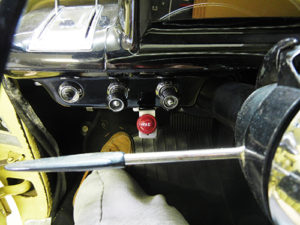 The completed unit was installed in the car and forgotten about, until I was returning from a cruise in Golden, Colo., and it began to rain.
The completed unit was installed in the car and forgotten about, until I was returning from a cruise in Golden, Colo., and it began to rain.
I turned on the wipers and since I was climbing back up the hill, the wipers immediately stopped in the middle of the windshield.
I looked down and there was the pump switch just sitting there, waiting to be turned on. I turned it on and, low and behold, I had working wipers again!
So, the next time you are in the rain with your classic car and the wipers stop, remember there was a fix created by Trico back in 1948 (I have a copy of the original drawing for the bracket dated 8/3/48).
The next time you are at a swap meet or on E-bay, keep an eye out. They come in 12- and 6-volt models. They are not hard to install and they do work. At the end of this are some of the diagrams I received from Trico.
Ed. note: Roy Lange is an IMOA member who resides in Conifer, Colo.


